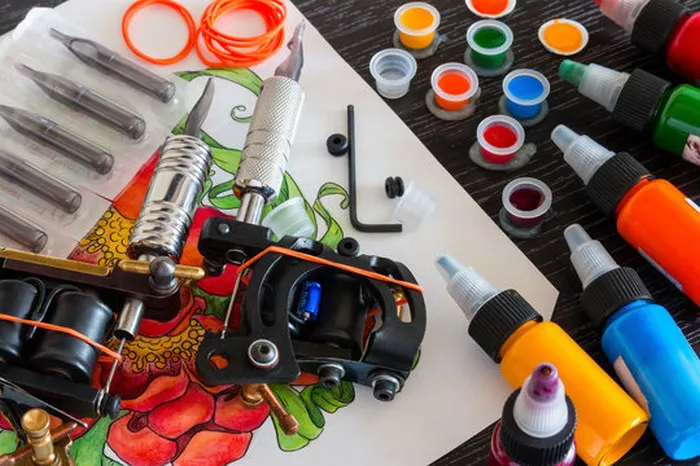Getting a tattoo is a personal and often transformative experience. However, for some, the process can be complicated by an adverse reaction to the ink. Tattoo ink rejection is a phenomenon where the body’s immune system responds negatively to the tattoo ink, causing various skin issues. Understanding this condition is crucial for anyone considering a tattoo, as it helps in identifying and addressing potential problems early.
What is Tattoo Ink Rejection?
Tattoo ink rejection occurs when the body perceives the ink as a foreign substance and attempts to expel it. This reaction can be attributed to the body’s immune system, which may view the tattoo ink as a threat. Rejection can manifest in various ways, leading to symptoms that may cause concern for those who have recently had a tattoo.
Common Reasons Why the Body Might Reject Tattoo Ink
Allergic Reactions to Specific Ink Colors: Allergies to certain pigments, especially red ink, are common. These reactions can lead to significant discomfort and symptoms of rejection.
Use of Low-Quality Ink or Improper Tattooing Techniques: Tattoo ink that is not up to standard or tattooing practices that are not hygienic can introduce irritants into the skin, leading to rejection.
Pre-existing Skin Conditions or Sensitivities: Individuals with conditions such as eczema, psoriasis, or other skin sensitivities may be more prone to tattoo ink rejection.
How to Tell If Your Skin Is Rejecting Tattoo Ink?
Recognizing the signs of tattoo ink rejection is crucial for timely intervention. Here are some common symptoms to watch for:
Itching: Persistent or severe itching around the tattooed area is a common sign of ink rejection. While some itching is normal during the healing process, excessive or intense itching may indicate a problem.
Redness and Swelling: Unusual or prolonged redness and swelling around the tattoo can signal an adverse reaction. While some degree of redness and swelling is typical in the initial stages of healing, persistent symptoms may require attention.
Bumps and Rashes: The appearance of raised bumps, rashes, or granulomas (small, hard lumps) around the tattooed area can indicate rejection. These can be signs that the body is reacting to the tattoo ink.
Blisters and Pus: The formation of blisters or pus-filled sores is a more severe sign of rejection. This can indicate an infection or an intense allergic reaction.
Fading or Distortion: Unusual fading or distortion of the tattoo design may occur if the body is rejecting the ink. This can result from the immune system’s attempt to remove the ink particles from the skin.
Normal Healing vs Rejection
Understanding the normal healing process is essential to differentiate between typical healing signs and rejection.
Normal Healing Process
Mild Itching: Itching is a common part of the healing process, usually mild and manageable.
Slight Redness: Some redness is expected but should gradually decrease over time.
Scabbing: Formation of scabs is normal, as the skin repairs itself.
SEE ALSO: What to Wrap Tattoo with at Night
How to Differentiate Between Normal Healing Signs and Signs of Rejection
Duration and Intensity: Normal healing signs generally subside within a few weeks. Rejection symptoms are often persistent and may worsen over time.
Extent of Symptoms: Mild itching and slight redness are typical. Severe itching, prolonged redness, or the development of bumps, blisters, or pus are red flags.
Appearance of the Tattoo: While some fading is normal, significant distortion or the emergence of unusual marks can indicate rejection.
What to Do If You Suspect Ink Rejection
If you suspect that your skin is rejecting the tattoo ink, taking prompt action is essential.
Immediate Steps to Take
Keep the Area Clean: Gently clean the tattooed area with mild soap and water to prevent infection.
Avoid Scratching: Refrain from scratching or picking at the tattooed area, as this can worsen the situation.
When to Seek Medical Advice from a Dermatologist
Persistent Symptoms: If symptoms persist or worsen despite following aftercare instructions, consult a dermatologist.
Severe Reactions: Immediate medical attention is necessary if you experience severe reactions, such as excessive blistering or pus.
Possible Treatments and Interventions
Topical Creams: Your dermatologist may recommend topical creams to soothe the skin and reduce inflammation.
Antihistamines: Oral antihistamines may be prescribed to manage allergic reactions and itching.
Preventive Measures
Taking preventive steps can reduce the risk of tattoo ink rejection and ensure a smoother tattooing experience.
Choosing a Reputable Tattoo Artist and High-Quality Ink
Research: Ensure that your tattoo artist is experienced and uses high-quality, reputable ink.
Consultation: Discuss any skin sensitivities or allergies with your tattoo artist before getting a tattoo.
Following Proper Aftercare Instructions
Aftercare Routine: Follow the aftercare instructions provided by your tattoo artist to promote proper healing and minimize complications.
Avoid Substances: Stay away from potential irritants, such as harsh chemicals or certain skincare products, during the healing process.
Conclusion
Understanding how to recognize and address tattoo ink rejection is crucial for anyone considering a tattoo. By being aware of the signs, differentiating between normal healing and rejection, and taking preventive measures, you can enhance your chances of a successful and comfortable tattoo experience. If you notice any signs of rejection, seeking timely medical advice can help address the issue effectively and ensure that your tattoo heals properly.
Related Topics

